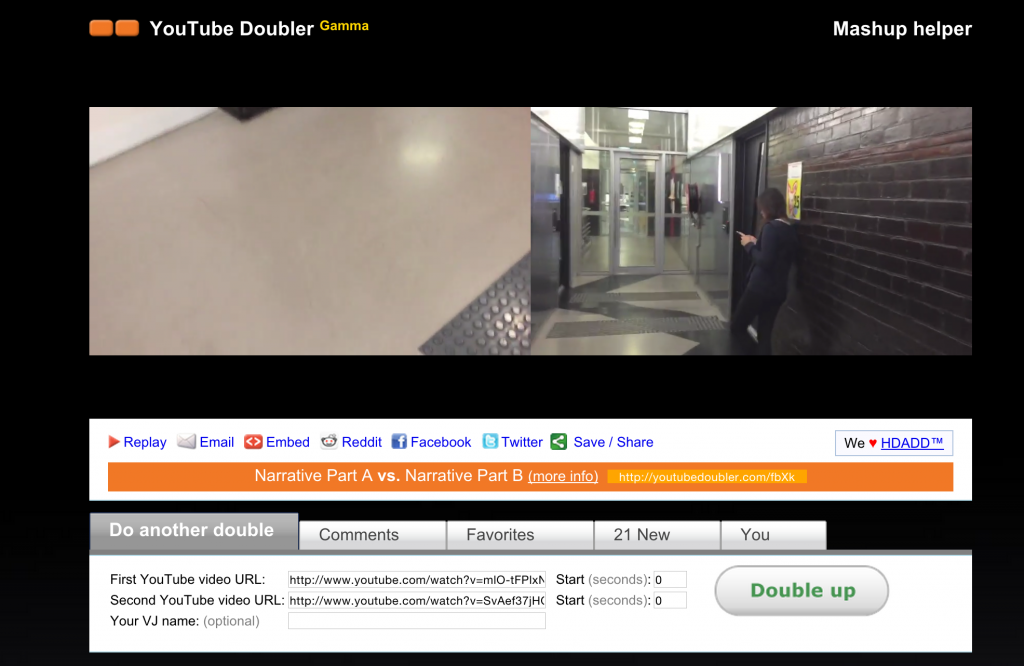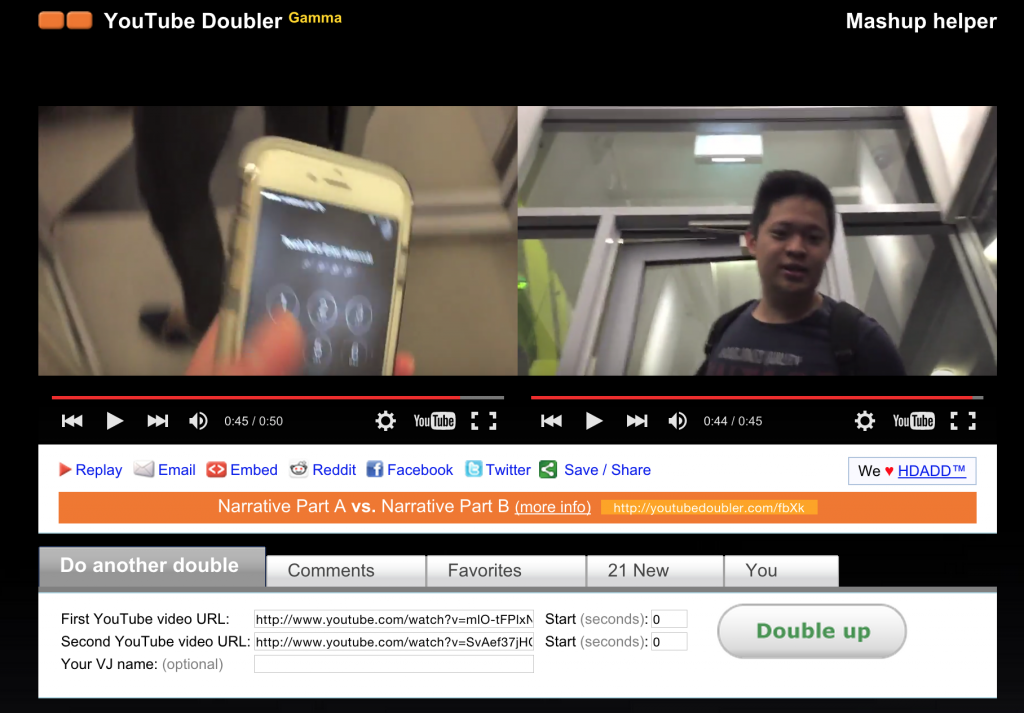2 more days till the due date! We have finally gotten everything down (well, almost)! Trying to be organised, so we had our GoogleDocs with a checklist and our probe (so we won’t go off track). So here are our list of sketch ideas:
1. Putting the narrative structure through various angles and compare the difference.
2. Putting the non-narrative structure through various angles and compare the difference.
3. Using the boring old platform, YouTube annotations to create interactive narrative structure.
4. Using the boring old platform, YouTube annotations to create interactive non-narrative structure.
5. Spicing it up a little, using the YouTube videos to allow participants to create their own story with YouTube Doubler in a narrative form.
6. Spicing it up a little, using the YouTube videos to allow participants to create their own story with YouTube Doubler in a non-narrative form.
7. Testing the constraints of narrative structures in Korsakow, Periscope and Vine.
8. Testing the constraints of non-narrative structures in Korsakow, Periscope and Vine.
The last two was for hybrid genre. However, we still can’t think of a good sketch to show the hybrid genre of live streaming and interactive video. So altogether we have 12 sketches down. As of today, Wednesday, 22nd April 2015, I have at least gotten our non-narrative sketches filmed and ready to be edited while Peter has completed is narrative sketches.

Seeing this project coming together, I feel extremely excited. I feel like a kid entering the candy store, wanting to try everything. Unfortunately for the time constraints, I have to make sure I do not run off topic again. We were always reminded to “WORK SMALL AND BE SPECIFIC.” As the weeks pass by, despite some struggles in understanding the concepts, I am thoroughly enjoying this course because we get to experiment on plenty of things, get feedback and criticism from the peers as well as the lecturer to improve as well as getting to know other projects by my peers. This workshop is really an interesting concept and I am pretty sure I walk out of the class every week with more information in my mind.
Now, back to editing my non-narrative sketches (it has finished rendering)!






